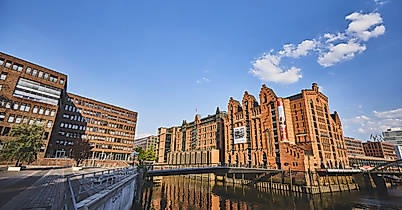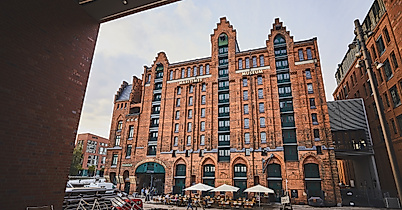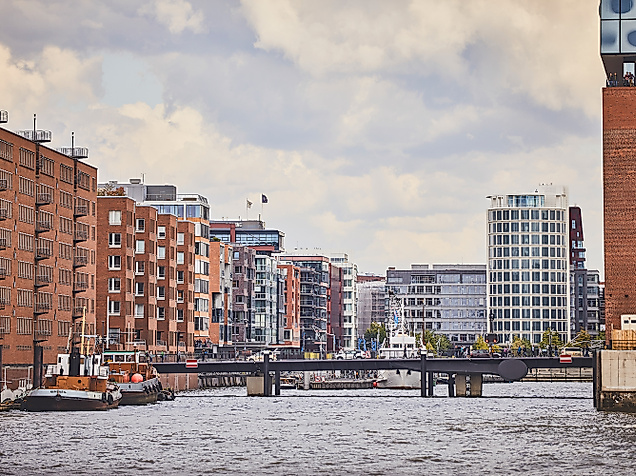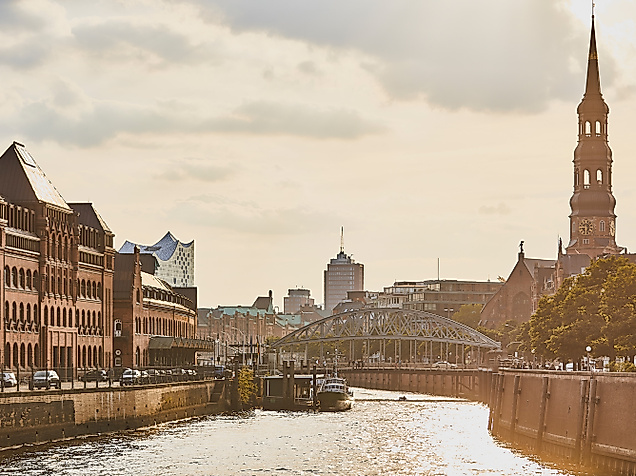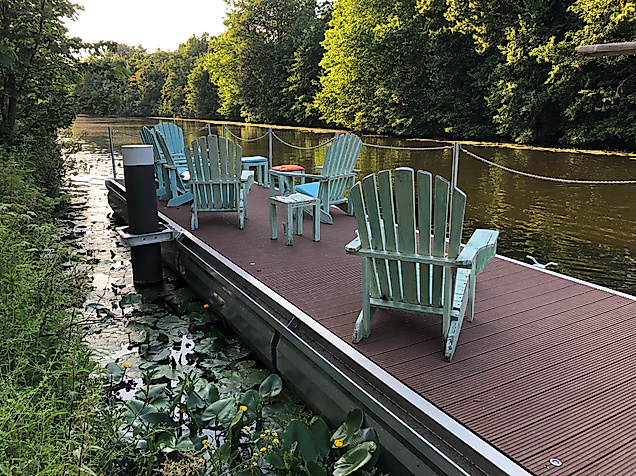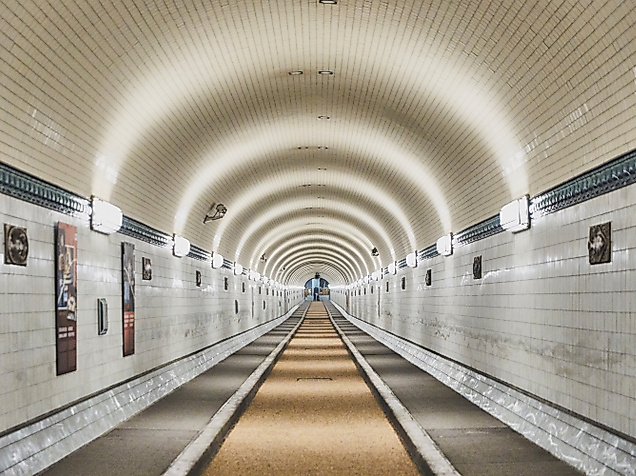




Kaispeicher B
Kaispeicher B, the oldest warehouse in the Speicherstadt and HafenCity, lies where the Magdeburg and Brooktor harbours meet and forms a unique entrance to the Überseequartier.
Kaispeicher B at the Magdeburg and Brooktor harbours was built in 1878/79, commissioned by the silo company J.W. Boutin based on plans by Bernhard Georg Jacob Hanssen and Wilhelm Emil Meerwein. The ten-storey brick building is thus around ten years older than the houses in the Speicherstadt and today the oldest warehouse in Hamburg. The façade with its gables, cornices and pointed arches already shows the neo-Gothic style of the "Hanover School", typical of the Speicherstadt. Like the other buildings in the Speicherstadt it was a functional building - but a representative.
Kaispeicher B is surrounded on two sides by water. Barges and ships came from the Elbe into the Magdeburger Hafen and were unloaded with winches via their loading doors. From the Brooktorhafen smaller boats transported the goods onwards. On the south side, a railway connection also leads into the ground floor of the building.
The city of Hamburg acquired the complex in 1890. Today it is still the owner of the building and rented it for the storage of goods via the city-owned Hamburger Hafen und Logistik AG (HHLA) until 2003. The last user was Gebr. Heinemann KG, whose administration building is adjacent to the warehouse.
On 14 June 2005 Hamburg's first mayor Ole von Beust and museum founder Peter Tamm laid a second foundation stone at the as yet unrenovated warehouse. A few days later the reconstruction began, for which the city of Hamburg has invested 30 million euros.
The plan for the renovation and (careful) transformation comes from the Hamburg architect Mirjana Markovic. She arranged four corresponding "airspaces" before connecting the three floors of the warehouse. A pedestrian bridge in the north and the public passage through the building, shop, café and restaurant make the museum a link between the Speicherstadt and HafenCity.
The building is listed and required a sensitive touch. More than 150 construction workers chiselled 50,000 stones by hand, examined them and put them back in place. Even with the installation of the stairwells and lifts necessary for a modern museum the workers largely dispensed with heavy equipment.
The Peter Tamm foundation celebrated a second topping out ceremony on 12 May 2006, and on 21 December 2006 the finished construction was tested and passed. The International Maritime Museum Hamburg could move in.
Top customer reviews
Search
Languages
Google translator for other languages
Please note that this is an automatic translation.
For better information, you can always switch to the German or English version

